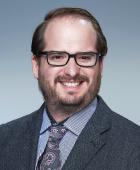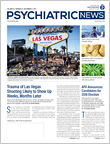I can remember wanting to be a doctor at 5 years old. Being one of the great nerds of Shawnee Mission, I was constantly in the library or classroom. These locations were my safe havens from the bullies who made fun of my effeminate nature and allowed my curiosity to multiply. In between reading almost every book in my public library, I planned my life. By sixth grade, I knew when the SAT should be taken, the names of my favorite Ivy League schools, the age when I would enter medical school (22), the age when I would finish my medicine residency (29), and where I would practice (suburban Kansas City, Kan.) the entirety of my adulthood. This life course was written down using childish cursive in my first autobiography.
Thankfully, my life’s journey took many twists and turns away from those sixth grade preconceptions. First, I discovered that I was gay and gradually developed an acceptance of my sexual orientation. I took this chance of self-acceptance only after all of the Ivy League schools had the audacity to reject my first round of medical school applications. After I moved back into my parent’s house following college graduation, my father offered me two choices. I could work on one of the asphalt paving crews in his company while living at home or obtain an alternate job and residence. Not wanting to waste my liberal arts education, I threw a dart at a U.S. map, and it landed near Baltimore.
Having never been to the mid-Atlantic, I applied for a laboratory technician job at Johns Hopkins University and was hired after a simple phone interview. I moved to Baltimore knowing no one. During that year of employment, I was exposed to psychiatry for the first time. I shadowed a psychiatrist as he took care of patients on the inpatient chronic pain unit. After months of physical and occupational therapy, group therapy, individual therapy, and detoxification from opioids, sedatives, and unnecessary psychotropic medications, I saw a woman walk for the first time in over 15 years. This psychiatrist and his team made the lame walk again—an experience that has shaped my career and made me aspire to do the same.
Second, I moved to New York City to attend New York Medical College. As a medical student, I joined the board of the Association of Gay and Lesbian Psychiatrists (now AGLP) because it came with travel funds to conferences. In this role, I met the scientists and researchers who lobbied for APA to remove homosexuality from DSM, including Drs. Barbara Gittings and John Fryer. My schooling and the AGLP showed me that psychiatrists could be excellent clinicians, advocates, administrators, and world-renowned researchers. My career path was set.
Third, I returned to Johns Hopkins for psychiatry residency, fellowship, and my first seven years on faculty. I ended up specializing in addictions and developed my own research interests at the intersection of chronic pain and addiction. During my medical training, our country became embroiled in the twin epidemics of chronic pain and opioid overdose deaths. Due to my training and strong mentorship, I became uniquely qualified to develop collaborative solutions to these epidemics.
All the bullies, medical school rejections, and one large leap of faith have led me away from my rigid sixth grade life course and toward where I am needed most. I am the newly appointed director of the Division of Substance Abuse and Addiction Medicine at Zuckerberg San Francisco General Hospital—a dream job for this psychiatrist and a platform for solution building. My work has just begun. ■

